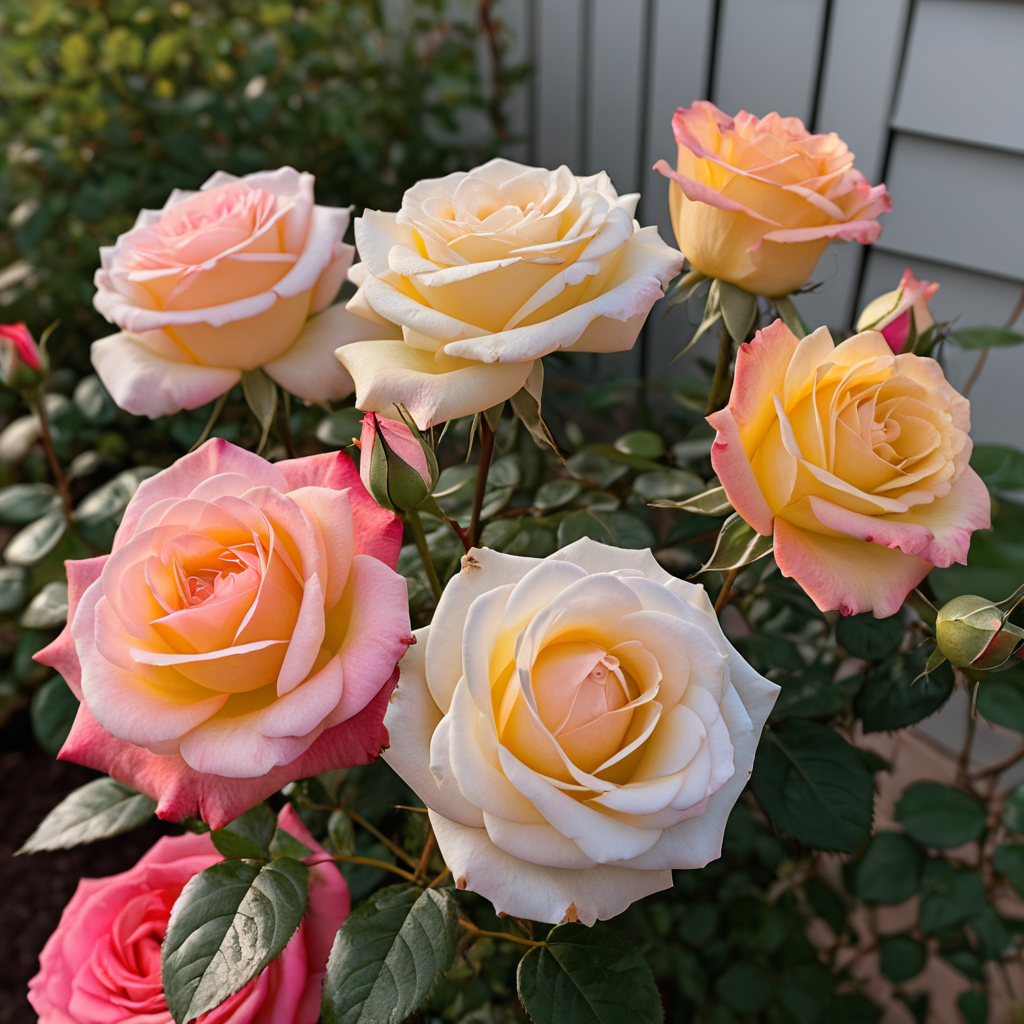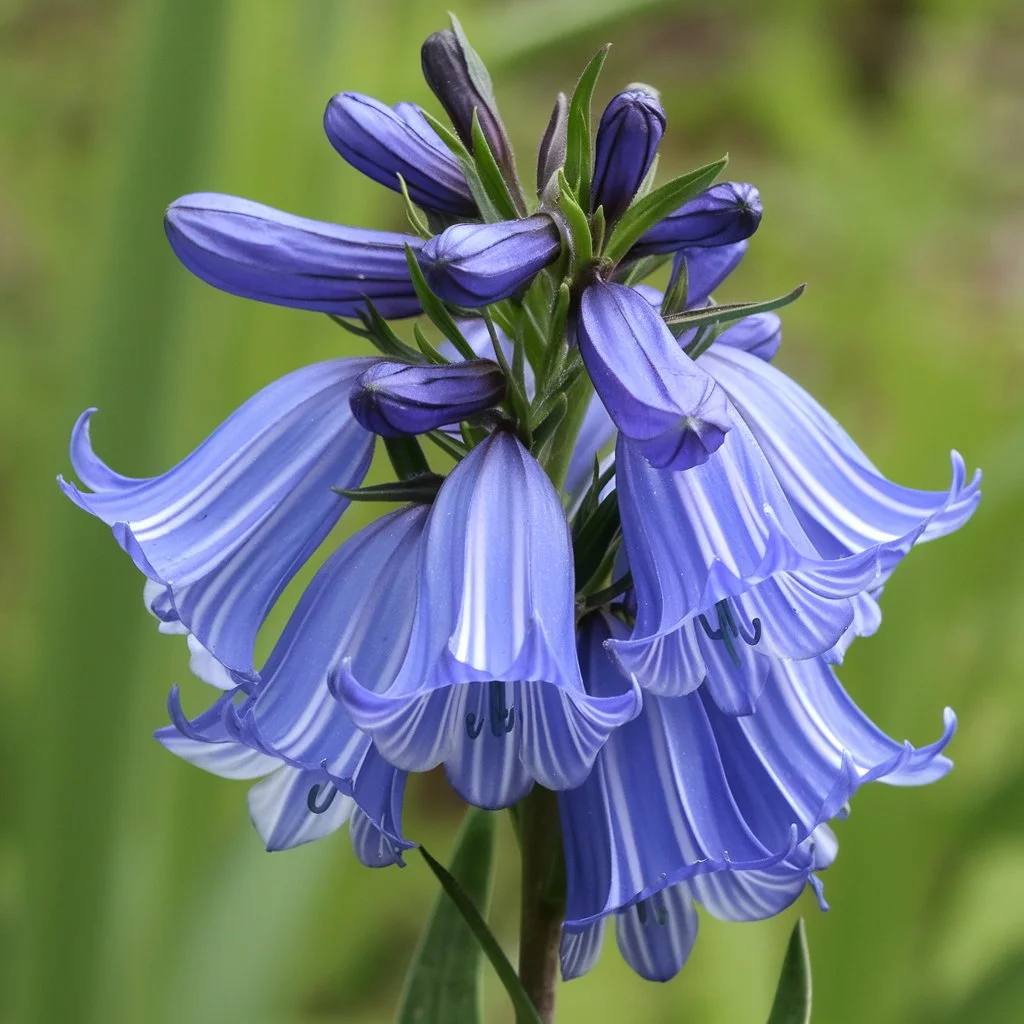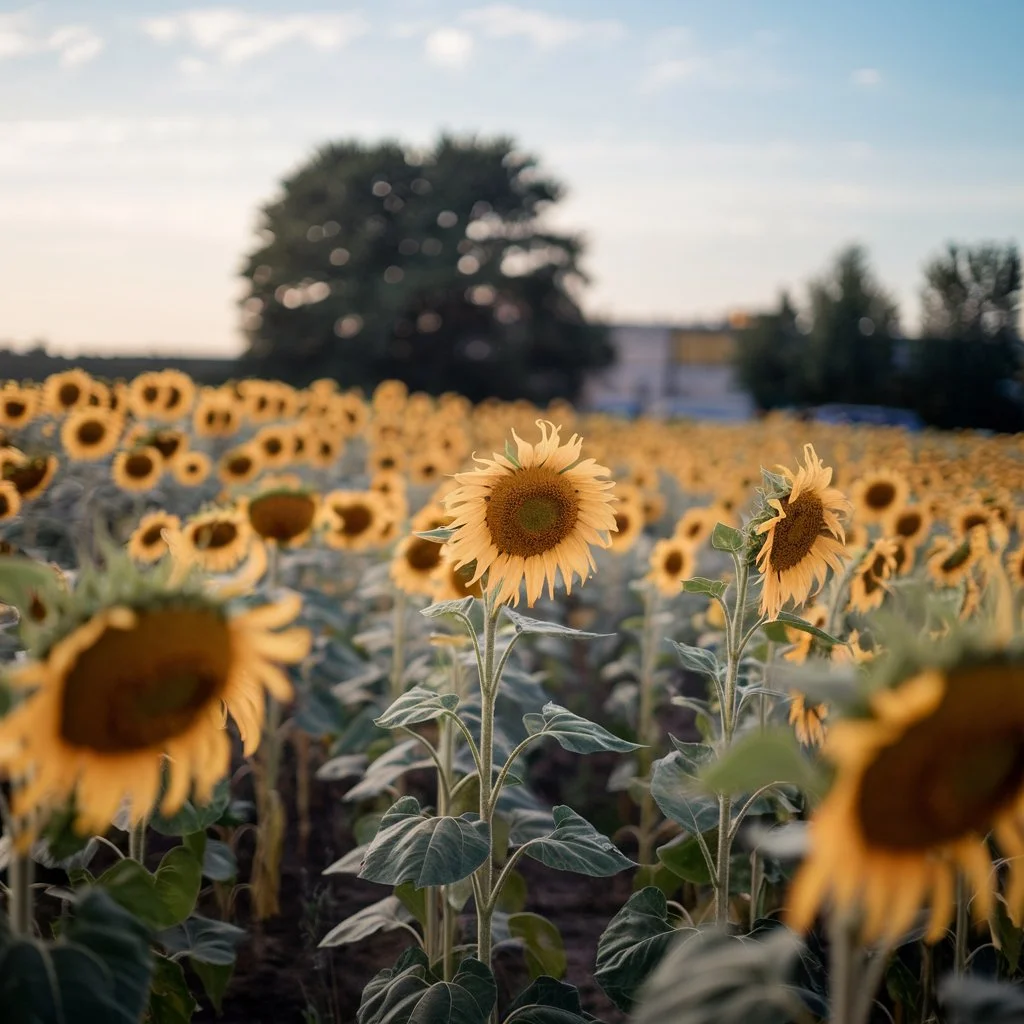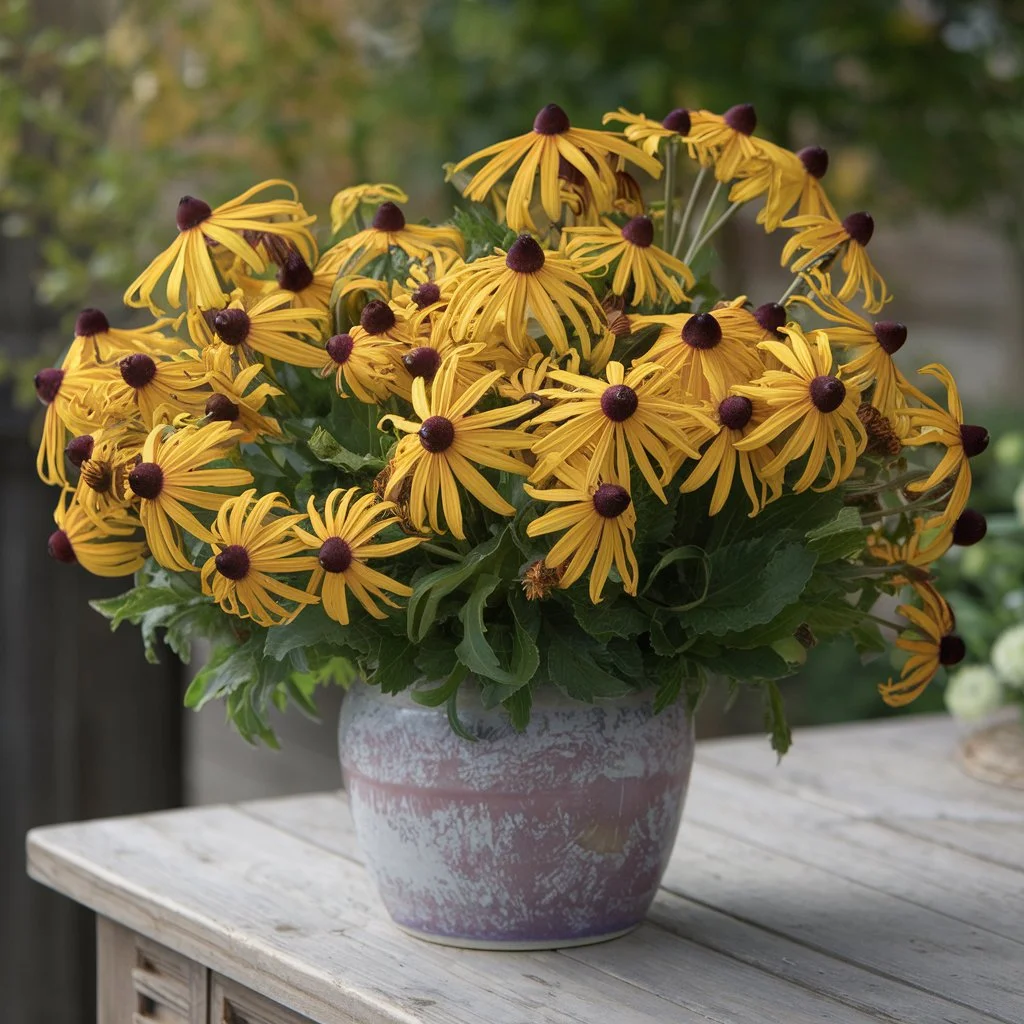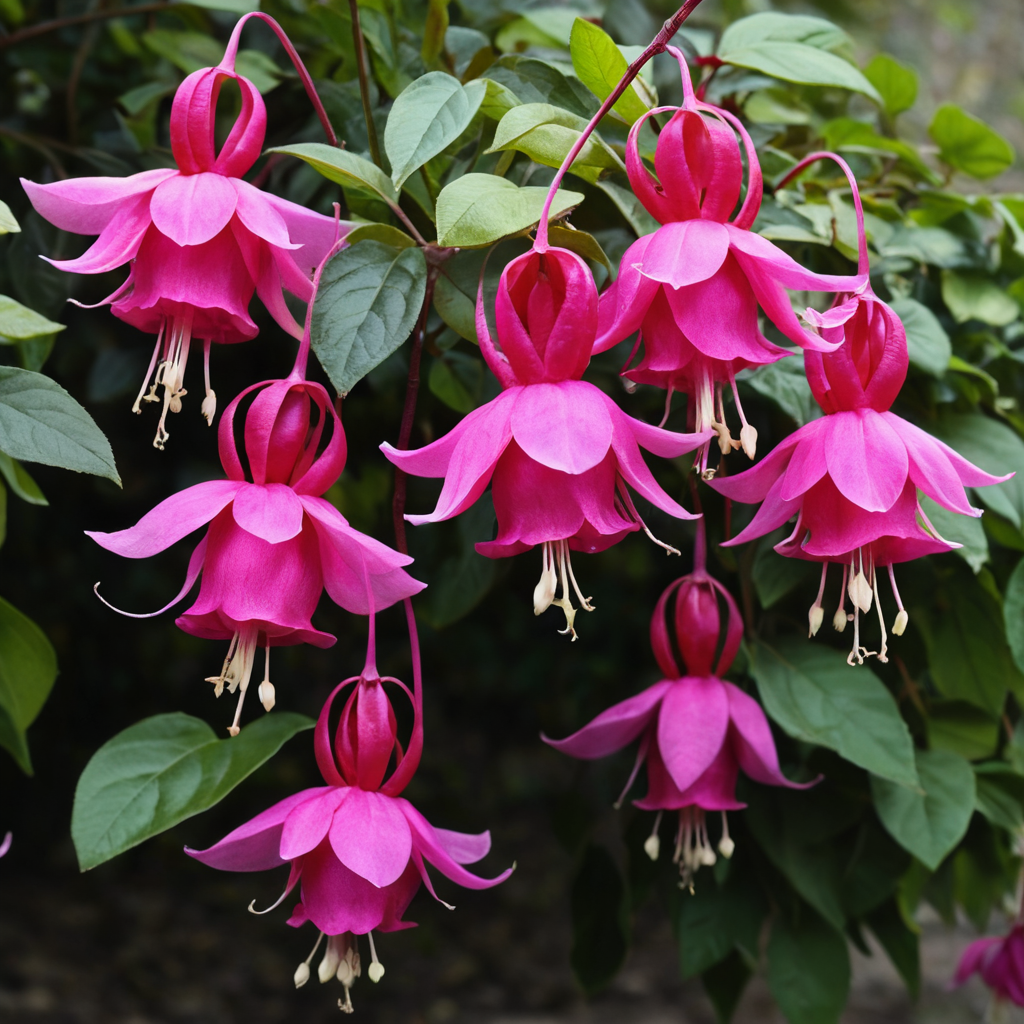Have you ever taken a walk in your garden and noticed that your favorite rose seems to have made a fashion change? It shows bright red one day, pale pink or even a sudden unexpected splash of white the next. What is going on here? Are your roses playing tricks on you, or is there a hidden science behind these changes?
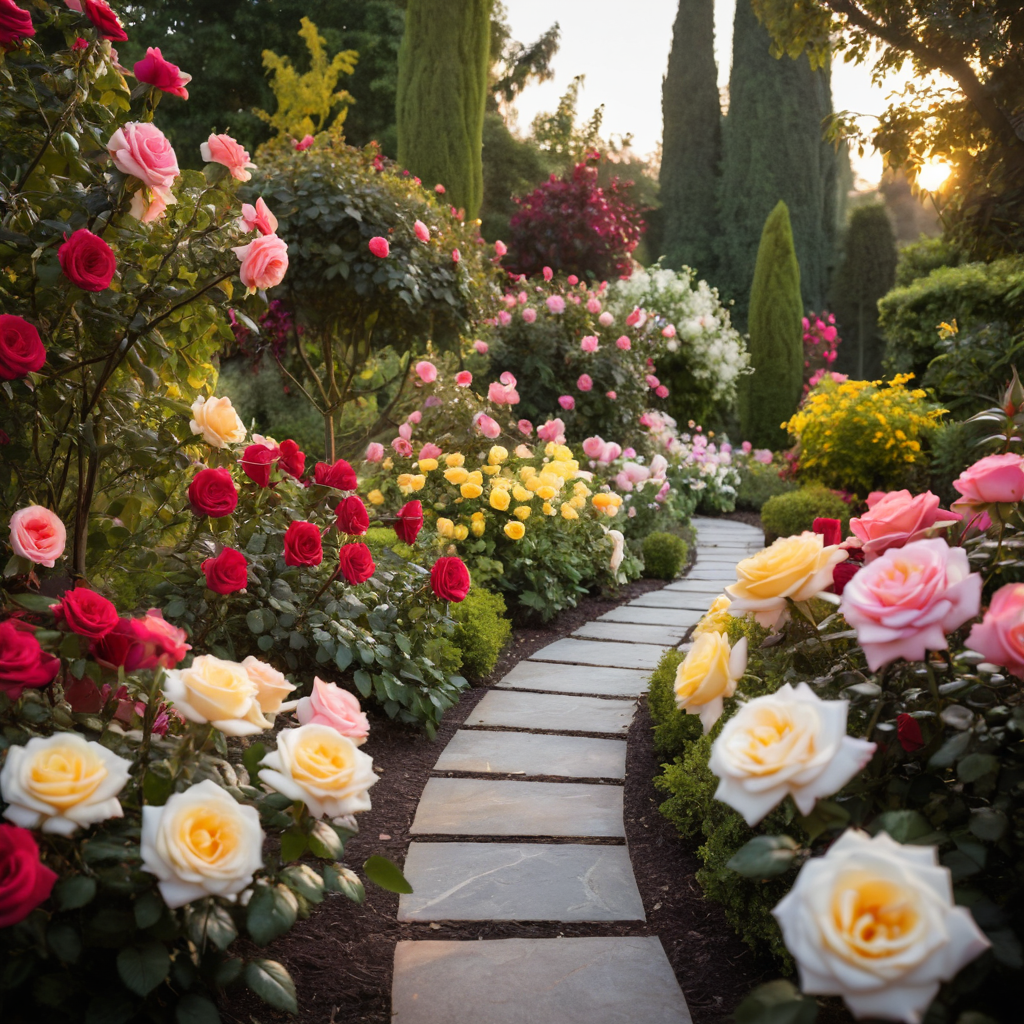
Changing the color of a rose may seem like a little secret planted right in your backyard, but the truth is even more exciting! From genetic quirks to weather magic, and even the occasional “oops” moment from Mother Nature, roses have reasons to keep us on our toes.
In this article, we will unravel the fascinating secret behind this remarkable transformation. Whether you are an inquisitive gardener or a rose enthusiast who simply loves the wonders of nature, stick around. By the time you’re done you’ll be wowing your friends with knowledge of graft reversion, plant sports (no, not the sports way), and how you want heat and sunshine to change your rose’s outfit let’s dive in ! 🌹 and it is
Introduction
Overview of Rose Color Changes
Rose has a way of keeping us on our toes. One day they’re basking in the sun as bold, passionate reds, the next day they’re shimmering in soft pastels. They seem to do their fashion show, and we are left wondering how they pull off such a quick change. What is Maya? Garden in the magic? Or is it inherently just a clever trick?
The truth is even better—it’s science at its finest! A rose changes color for a variety of reasons, each more attractive than the last. The main drivers of these changes include:
- Genetic surprises: Like a rose suddenly remembering it has a great-grandparent with different coloring, genetic traits can pop up unexpectedly.
- Environmental influences: Roses are incredibly sensitive to their surroundings. Changes in temperature, sunlight, or even soil pH can nudge them to showcase new shades.
- Health and stress factors: Just like us, when roses are stressed, they don’t always look their best. Disease, pests, or nutritional deficiencies can all play a role in these transformations.
These changes may seem like little secrets in your garden, but they’re actually nature’s way of expressing themselves. The more you understand why the color changes, the more you appreciate the beauty of the landscape.
Purpose of Understanding Rose Color Transformations
So why does it matter if your roses change color? Because these changes aren’t just pretty surprises—they are insights that can make you a better gardener and fill you with a greater appreciation of flowers
Here’s why it’s worth understanding these transformations:
- Spotting issues early: Roses use their colors as a kind of communication. If you know what to look for, you can catch problems like disease, pests, or stress before they become major headaches.
- Understanding your garden’s environment: The conditions around your roses—like temperature, light levels, and soil quality—are directly tied to how they grow and look. By studying color changes, you’ll gain a better grasp of your garden’s ecosystem.
- Encouraging your roses to shine: Once you know the factors that influence color, you can work with them to either maintain your roses’ current hues or even encourage new, delightful shades.
At its heart, understanding why a rose changes color makes you more connected to the natural world. It transforms a simple flower into a storyteller, telling secrets about environment, genetics and health. So get ready to dive in and unlock the secrets behind the most colorful additions to your garden!🌹
Understanding Rose Color Changes
Factors Influencing Rose Pigmentation
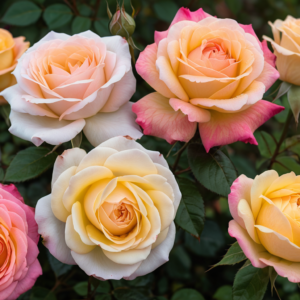 When it comes to their striking color palettes, roses are like little doctors, mixing colors in stunning displays. But what really defines their palette? It all adds up to a smooth mix of beautiful colors:
When it comes to their striking color palettes, roses are like little doctors, mixing colors in stunning displays. But what really defines their palette? It all adds up to a smooth mix of beautiful colors:
- Genetics: Each rose carries a unique genetic blueprint that sets the stage for its color, but even the most carefully bred roses can have surprises in store.
- Environmental influences: Temperature, sunlight, soil pH, and even moisture levels can tweak how pigments are produced or displayed.
- Plant health: A rose in its prime will show off its true colors, but stress, disease, or pests can cause changes, dullness, or unusual hues.
Think of it as a complete recipe—every ingredient plays a role in creating the final masterpiece. But sometimes a little tweak here or there can lead to unexpected (and often beautiful) results.
The Interplay of Genetics, Environment, and Plant Health
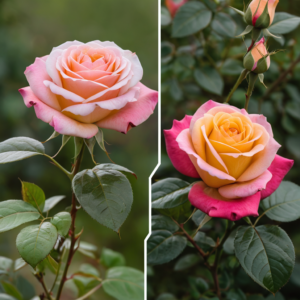 The magic of rose colors is not in any one thing; it is in the interaction of many forces working together. Let’s break it down:
The magic of rose colors is not in any one thing; it is in the interaction of many forces working together. Let’s break it down:
- Genetics set the stage: The genes of a rose determine its baseline color and how it reacts to its surroundings. Some roses are predisposed to vibrant reds, while others lean toward gentle whites or playful yellows. But genes can also carry hidden surprises, like a recessive trait that pops up unexpectedly!
- Environment adds drama: Picture a warm summer day—roses basking in the sunlight might show off deeper, more vibrant tones. Now imagine a cooler evening; those same roses might soften into pastel shades. Even the pH of the soil can affect how pigments develop, creating subtle shifts in hue.
- Health is the finishing touch: A thriving, healthy rose is like a well-rested performer—ready to shine. But if pests, diseases, or nutrient deficiencies come into play, it might struggle to produce pigments, leading to faded or unusual colors.
Your garden acts as a stage for the delicate dance between these elements. By understanding how genetics, environment, and health interact, you can better appreciate the art behind each flower—and influence how your roses take their final arrows.🌹
Genetic Factors That Impact Rose Color
When it comes to roses, their genetics are like a treasure chest of possibilities—some colors are right there on top, while others are buried, just waiting for the right moment to shine in. Let’s explore two interesting options which instinct can shake the shape of your rose.
Graft Reversion: A Genetic Throwback
Ever glanced at your rose bush, thinking, “Was this a different hue before?” You could be seeing graft reversion. Here’s the lowdown:
- Many modern roses are created by grafting a desirable variety onto a hardy rootstock. It’s a bit like putting a fancy dress on a tough, reliable mannequin.
- Over time, the rootstock (the “mannequin”) can decide it wants its moment in the spotlight and start producing its own blooms, which may look completely different from the grafted variety.
- The result? A sudden splash of unexpected color in your rose garden!
Graft reversion isn’t necessarily a bad thing—it’s just nature’s way of reminding us who’s really in charge. If you are not a fan of change, regular trimming can help control the roots.
Plant Sports: Nature’s Color Experiment
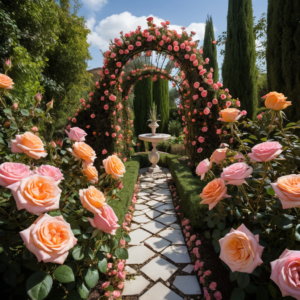 Now, let’s talk about “plant games”. Don’t worry, no running or jumping—just some seriously amazing cool plants!
Now, let’s talk about “plant games”. Don’t worry, no running or jumping—just some seriously amazing cool plants!
- A plant sport happens when a rose spontaneously mutates to produce blooms that are different from its usual color.
- These changes can result in subtle shifts, like a deeper shade of pink, or dramatic transformations, like a red rose suddenly blooming in white.
- Sports are rare, but when they happen, they can lead to entirely new rose varieties. In fact, many of the roses we know and love today started as unexpected sports!
Think of plant games as miniature experiments in nature, where every mutation is a potential work of art. If you spot one in your garden, consider yourself lucky—you’ve just witnessed the birth of something truly special.
Roses from graft reversion and plant play show us how creative they can be. Whether it’s a nod to their roots or a bold new direction, these genetic wonders are part of what makes growing roses such a timeless delight. 🌹
Environmental Influences on Rose Color
When it comes to rose discoloration, environment plays an important role. Everything from changes in temperature to sunlight and soil texture can trigger roses to reveal unexpected colors. Let’s dive into the environmental factors that not only change flowers but also leaf color for roses.
Temperature: A Seasonal Shaper of Hues
Have you ever noticed that at some times the color of a rose appears brighter and at others it is softer. That’s the magic of heat at work.
- Cool temperatures: During cooler seasons, roses often produce more vibrant colors. This is because the pigments responsible for rose color changes—like anthocyanins—thrive in lower temperatures. You might see reds deepen, purples become richer, and whites gain a crisp, clean brilliance.
- Warm temperatures: In contrast, heat can cause pigments to fade. A fiery summer might transform a deep red rose into a softer, almost pastel shade.
- Temperature shifts: Rapid changes in temperature can also lead to surprising color change in roses, creating blooms that seem to shift shades almost overnight.
Flowers are not the only ones that feel warm; It can also contribute to subtle leaf color changes in roses, adding a whole new level of interest to your garden.
Sunlight and Soil pH: Unsung Influencers
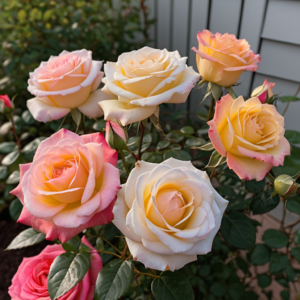 When temperature determines the quality of the roses, sunlight and soil pH act as stylists, effectively changing their appearance.
When temperature determines the quality of the roses, sunlight and soil pH act as stylists, effectively changing their appearance.
- Sunlight: Roses need plenty of sunlight to thrive, but too much exposure can cause colors to fade, especially in lighter-colored flowers. On the other hand, just the right amount of light can make darker roses appear richer and more intense.
- Soil pH: The acidity or alkalinity of the soil directly affects the pigments in a rose’s blooms. Acidic soil often enhances blue and purple tones, while alkaline soil can bring out yellows and reds. This interplay is a key driver of rose color changes in different regions or even different parts of the same garden.
Both sunlight and soil play a role in leaf color change for roses. A healthy rose reflects the overall goodness of the plant, which in turn affects the vibrancy of its flowers.
By understanding how these environmental factors affect color change in rose petals and leaves, you can create the perfect conditions for your roses to thrive🌹
Health and Stress Factors
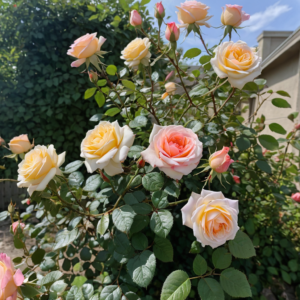 Roses are sensitive souls, and when they’re under stress, they let us know—often through rose color changes or shifts in the appearance of their foliage. From diseases to pests and even a lack of proper nutrition, health challenges can cause noticeable changes in both flowers and foliage. Let’s explore how these factors influence the color change in roses and what they’re trying to tell you.
Roses are sensitive souls, and when they’re under stress, they let us know—often through rose color changes or shifts in the appearance of their foliage. From diseases to pests and even a lack of proper nutrition, health challenges can cause noticeable changes in both flowers and foliage. Let’s explore how these factors influence the color change in roses and what they’re trying to tell you.
Disease: When Roses Send Warning Signals
If your roses are showing unexpected changes in their blooms or foliage, it might be their way of waving a red flag. Diseases can stress roses, leading to noticeable rose color changes and other telltale signs.
- Black spot and powdery mildew: Common fungal diseases that weaken the plant and cause faded or dull flowers. You might notice foliage color changes for roses, such as yellowing leaves with dark spots or a powdery white coating.
- Rust and downy mildew: These diseases not only affect rose foliage but can also impact flower production, resulting in blooms that are smaller, paler, or even off-color.
- Viral infections: Some viruses cause streaking or discoloration in rose petals, leading to unusual color change in rose flowers that might seem like a sport but are actually a sign of trouble.
If you spot these warning signs, act quickly! Treating diseases early can prevent further stress and restore your roses to their vibrant glory.
Pest Damage and Nutrient Deficiency
Just like diseases, pests and nutrient imbalances can lead to stress-induced changes in both flowers and foliage color. Healthy roses need both protection from invaders and a balanced diet to thrive.
- Pests: Aphids, spider mites, and thrips are notorious for attacking roses. Their feeding can weaken the plant, leading to faded blooms or irregular rose color changes. Damage to rose foliage is another red flag—look for holes, yellowing, or curling leaves.
- Nutrient deficiency: Roses are hungry plants, and missing out on key nutrients like nitrogen, phosphorus, or magnesium can affect both flower and foliage color changes for roses. For example:
- Nitrogen deficiency: Leads to pale, yellowing leaves and smaller, less vibrant flowers.
- Phosphorus deficiency: Can cause dull blooms and slow growth.
- Magnesium deficiency: Often shows as yellowing leaves with green veins—a sign your roses need a boost.
Keeping pests at bay and providing proper nutrition ensures your roses have the energy they need to produce vibrant flowers and lush, green foliage.
By addressing health and stress factors, you can minimize unexpected color change in rose flowers and foliage, keeping your garden full of thriving, beautiful blooms. 🌹
Cultural and Practical Insights
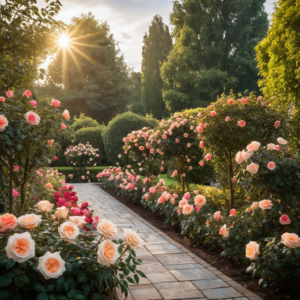 Roses have been adored for centuries, and through that time, gardeners have collected fascinating stories and practical advice about how these flowers can surprise us with their color changes. From tales of roses with remarkable transformations to tips for controlling and enhancing those hues, there’s plenty of wisdom to be passed on. Let’s explore how cultural knowledge and practical tips can help you manage rose color changes in your own garden.
Roses have been adored for centuries, and through that time, gardeners have collected fascinating stories and practical advice about how these flowers can surprise us with their color changes. From tales of roses with remarkable transformations to tips for controlling and enhancing those hues, there’s plenty of wisdom to be passed on. Let’s explore how cultural knowledge and practical tips can help you manage rose color changes in your own garden.
Stories of Roses with Remarkable Color Changes
Throughout history, roses have been known for their remarkable and sometimes unexpected color changes, and these stories add to their allure. These fascinating tales are as much about nature’s mystery as they are about the beauty of the blooms themselves.
- The “Blue” Rose: While roses don’t naturally come in true blue, some breeders have managed to create roses that appear close, thanks to clever genetic engineering. These roses can change their hue depending on the pH of the soil, and even a subtle shift in the soil’s acidity can result in a dramatic color change in rose flowers—from lavender to deep blue.
- The Color-Changing “Peace” Rose: The famous “Peace” rose, one of the most beloved hybrids, is known for its ability to shift hues based on environmental conditions. It can bloom in a blend of creamy yellow and pink, but a cooler temperature or even a slightly different watering routine can cause it to change its shades over time.
- The Mutating “Bicolor” Roses: Some roses, like those of the “Double Delight” variety, can display stunning color transformations as they open. Starting as pale cream, the blooms gradually reveal a rich red hue along their edges, creating a bicolor effect. This gradual change is one of the many wonders of rose color changes that keep gardeners coming back for more.
These stories are just a glimpse into the fascinating world of roses that can surprise you with their ability to evolve and change in ways you might never expect.
Tips for Preserving and Encouraging Desired Colors
While some rose color changes are beyond our control, there are plenty of ways to encourage your roses to keep their color or even coax them into shifting into more vibrant shades. Here’s how you can help preserve or encourage the desired color change in roses and foliage:
- Choose the right rose variety: Some roses are more prone to color shifts than others. If you want a specific color, research varieties that are known for holding their hue. Consider varieties like “Mr. Lincoln” for deep reds or “Iceberg” for consistent white blooms.
- Control environmental factors: If you’ve noticed your roses changing color in ways you don’t want, try adjusting their environment.
- Temperature: Keep roses in a spot where temperature fluctuations are minimal. Excessive heat can fade colors, so try to protect them from the harsh afternoon sun.
- Soil pH: If you want to influence your rose colors, adjusting the pH of the soil can make a difference. Slightly acidic soil tends to bring out cooler tones, while more alkaline soil can make reds and oranges pop.
- Prune regularly: Regular pruning not only helps your roses grow healthy and strong, but it can also encourage more consistent color changes. By removing faded or dead blooms, you allow the plant to focus its energy on vibrant new growth.
- Fertilize properly: Roses are heavy feeders. Ensuring that your plants receive balanced nutrients, including nitrogen, potassium, and phosphorus, helps them thrive and display their true colors. A well-fed rose is more likely to produce full, healthy blooms with vibrant color.
By following these tips, you can not only preserve your roses’ existing colors but also unlock new and beautiful hues in your garden. With a little attention to detail and some gardening know-how, you’ll be able to guide your roses toward the color transformations you desire. 🌹
FAQ
What types of roses experience color changes?
Roses, particularly hybrid varieties like floribundas and grandifloras, are known for rose color changes due to environmental factors. Temperature, sunlight, and soil pH can trigger color change in rose flowers, especially in bicolor and multicolored varieties. These roses are more likely to exhibit dynamic rose color changes depending on growing conditions.
What rose is known for changing color?
The “Peace” rose is a popular variety known for its ability to change color. Starting with creamy yellow blooms with pink edges, this rose undergoes a beautiful color change in rose flowers, shifting hues based on temperature and environmental conditions. It’s one of the most famous roses for showcasing remarkable rose color changes throughout its bloom cycle.
What causes my rose to change its color?
The most common causes of color change in rose flowers include environmental factors such as temperature, sunlight, and soil pH. Genetic factors, such as graft reversion and plant sports, also play a role in rose color changes. Furthermore, health issues like disease and pest damage can lead to unexpected color shifts in both roses and rose foliage color changes.
Why has my white rose turned pink?
Your white rose turning pink may be a result of temperature changes, soil pH alterations, or natural aging. Some white roses undergo a subtle but striking color change in rose flowers, transforming to pink hues under certain conditions. Genetic factors may also be responsible for the unexpected shift, particularly in hybrid roses.
Why are there different colored roses on the same bush?
Different colored roses on the same bush may be due to graft reversion, where the rootstock, which is often a different variety, begins to flower with a different color. Additionally, plant sports or genetic mutations may cause the same bush to produce multiple rose color changes. Environmental factors such as temperature fluctuations can also lead to variations in both flower color and rose foliage color changes.
Why have my red roses turned yellow?
Red roses turning yellow can result from various factors such as temperature extremes or nutrient deficiencies, which affect rose color changes. A lack of nutrients like nitrogen can cause the petals of red roses to yellow and affect overall flower health. Disease or pest damage may also cause the color change in rose flowers, leading to yellowing of red blooms.
Conclusion
Understanding rose color changes adds a layer of magic to your garden that’s both intriguing and rewarding. Whether it’s the genetic marvel of graft reversion, the playful shifts influenced by temperature and sunlight, or the subtle impacts of plant health, roses have a way of surprising us with their dynamic beauty. By knowing what causes these changes, from rose foliage color changes to the bloom’s vibrant hues, you’ll have the knowledge to nurture your roses and encourage them to show off their most spectacular colors. Keep exploring, experimenting, and caring for your roses, and you’ll continue to witness the stunning transformations that make each bloom a work of art. Happy gardening! 🌹
Check out our latest article for more insights, and follow us on Facebook for updates! and connect with us on Instagram, Pinterest, and YouTube for more inspiration!

